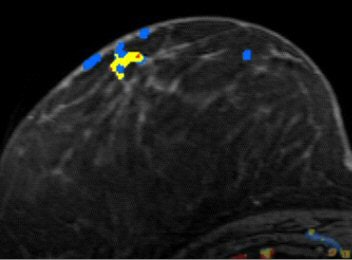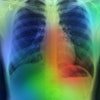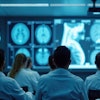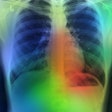While evidence grows in support of the clinical efficacy of breast MRI, making a business case for installing a dedicated system can still be a challenge. Any facility considering the plunge must analyze various factors, from procedure volume to staffing needs to reimbursement.
Fortunately, if you're thinking about buying a system, you can use the knowledge and experience gained from those who have gone before you. While breast MRI is a relatively new technology, many imaging facilities are finding that it can be implemented wisely, to the benefit of both patient care and a facility's bottom line.
Decision-making keys to success
The decision to install a dedicated breast MR system requires careful thought and planning to develop a sustainable business model.
Facilities debating whether to add a breast MRI service should start by analyzing the number of mammograms they perform each year, according to Dr. Robin Shermis, director of breast imaging at Toledo Hospital in Ohio. He believes that any facility that provides between 15,000 and 20,000 mammograms each year should consider installing a breast MRI magnet.

“We installed a dedicated breast MR system because this equipment is specifically tailored to these studies, and therefore you get better images.”
— Dr. Robin Shermis,
Toledo Hospital, Ohio
If a healthcare system doesn't have a single center that achieves that level of procedure volume, then several facilities within the network could install one breast MRI unit to serve all the facilities. Without those numbers, the economic viability of the enterprise could be questioned.
"We installed a dedicated breast MR system because this equipment is specifically tailored to these studies, and therefore you get better images," Shermis explained. "It has a spectacular biopsy system that is easy to use."
Installing a breast MRI system also has competitive advantages. To be considered a complete breast imaging center, a multimodality approach to screening and diagnostic workup is required, according to Dr. Robert Lapidus, medical director of the Women's Imaging Centre in Lafayette, LA.
At the center, breast MRI is used both for screening high-risk women and imaging women who are newly diagnosed with breast cancer to complete local staging of disease, assess for multifocal or multicentric disease, or detect contralateral lesions. The site initially projected that it would image two to three patients a day on the system, but it exceeded that expectation as it came out of the gates performing three to five breast MRI studies per day.
Women's Imaging Centre has also received referrals from physicians and requests for exams from a category of patients outside the recently released American Cancer Society guidelines for breast screening: patients with a personal history of breast cancer, those with diagnoses of atypical ductal hyperplasia, and those diagnosed with ductal carcinoma in situ and lobular carcinoma in situ in the past, according to Lapidus.
Cost-benefit analysis

Bay Radiology started
its cost-benefit analysis
of breast MRI by measuring its mammography procedure volume.
— Charles Allan,
Bay Radiology Associates, Panama City, FL
In performing a cost-benefit analysis, Charles Allan, business manager of Bay Radiology Associates in Panama City, FL, started his assessment with the knowledge that his facility had a very high volume of mammography studies. He then recognized that there was limited breast MRI service offered locally, and general surgeons were sending their patients out of town for breast MR scans.
Taking the costs involved in acquiring and using dedicated breast MRI, Bay Radiology calculated that it would need 3.7 patients per day to break even. With an installation in March of this year, Allan reports that the center is not quite to that level, but anticipates that it will reach that number soon. The group is initiating a robust marketing campaign aimed at physicians and their clients.
Breast MRI developer Aurora Imaging Technology of Andover, MA, has created business models to assist in the decision-making process, said Clark Corey, administrative director of radiology at the Toledo Hospital in Ohio. In deciding whether to add breast MRI, the hospital looked at the number of cancer diagnoses, biopsies, ultrasound studies, and surgical interventions it was performing.

Toledo Hospital looked at the number of cancer diagnoses, biopsies, ultrasound studies, and surgical interventions it was performing.
— Clark Corey,
Toledo Hospital, Ohio
Another consideration concerning economic viability involves staff utilization. Bay Radiology's mammography technologists have been trained by Aurora to perform breast MRI studies, so the facility did not have to provide training, according to Allan.
Toledo Hospital had a learning curve in getting the breast MRI service up and running that impacted productivity somewhat after installing the system in November 2007, Corey said. But the facility is now scanning between six and seven patients per day, with projections that it could manage up to eight patients per day.
Lapidus of Women's Imaging Centre concurs that a center does not need a dedicated MRI technologist to perform breast MRI exams. "All of our technologists can be cross-trained to do not only mammography, but MRI as well," he explained. This approach provides important efficiency and benefits in regard to staffing. Additionally, mammography technologists are the personnel most accustomed to dealing with breast patients and are expert at positioning and comforting anxious patients, he noted. With everything under one roof, the center is able to provide patients and their referring physicians with results in a streamlined fashion.
Considering throughput
With breast MR that is performed on a standard MRI system, using breast coils, usually images are acquired on one breast at a time. A dedicated breast MRI system offers higher throughput by performing bilateral imaging that includes axillary and chest wall regions in approximately 20 to 25 minutes, according to Allan.
 CAD software can help radiologists interpret breast MRI scans. This CAD-enhanced image shows a mixed, malignant enhancement pattern of the mass and hyperemia of the adjacent skin. Image courtesy of Dr. Bruce Porter, First Hill Diagnostic Imaging, Seattle. |
Both Shermis and Lapidus recommend the use of computer-aided detection (CAD) software to analyze images. CAD is integral to the operation of the system because it provides the hanging protocols to organize image datasets to facilitate interpretation, Lapidus explained.
"The other thing that CAD does with MR is to give you the functionality to place regions of interest on different points on the images so you can gather kinetic data," Lapidus said. "It also allows you to do color mapping in order to evaluate lesions in terms of their morphology, as well as their dynamics in contrast uptake and washout."
Reimbursement reality

“We were encouraged
by the fact that
breast MRI was not subject to the
Deficit Reduction
Act cuts.”
— Dr. Robert Lapidus, Women's Imaging Centre, Lafayette, LA
Whether a center will be reimbursed for these relatively costly procedures must be factored into making the decision about economic viability of offering this approach to breast imaging.
"We were encouraged by the fact that breast MRI was not subject to the Deficit Reduction Act cuts," Lapidus said. "In fact, if those procedures were subject to the DRA cuts, we would have thought twice about implementing the program due to financial constraints."
One of the challenges Allan has faced in Florida is the restrictive preauthorization guidelines imposed by the largest private insurance carrier in the area that were put into place in January 2008. Allan believes that insurance coverage will improve once the general medical community considers breast MRI to be the standard of care for specific patient groups.
The vital importance of marketing
After a cost-benefit analysis is completed and the scanner is either on the way or installed, the importance of marketing the system cannot be overlooked.
The Toledo Hospital Breast Care Center and Toledo Radiological Associates' joint venture is also allied with the ProMedica Health System, so marketing has been robust in this collaborative effort, according to Corey. They targeted a number of specialty physician groups, including ob/gyn physicians, surgeons, primary care physicians, general surgeons, and radiation oncologists, with visits to their offices, grand rounds, and brochures.
Because Toledo Hospital's scanner is located in the breast center, the patient can remain in the same area throughout all diagnostic activities, which provides a level of comfort for most women. The same is true for the Women's Imaging Centre, whose marketing strategy has followed a similar path to the Toledo Hospital, including placement of several items in the lay press.
However, Lapidus credits one of the most effective marketing strategies to be a weekly breast conference held at 6:30 a.m. on Thursdays, where positive biopsies from the trailing week are reviewed through the lens of pathology and radiology. Results are projected on a large LCD monitor for a multidisciplinary audience that includes radiologists, pathologists, breast surgeons, and radiation oncologists. While the patient's primary care physician is invited, their turnout is limited.
"The surgeons learn a lot about [breast MRI]," Lapidus explained. "At first, they were reluctant to integrate it into their practice patterns, but after they've seen the capabilities of it, they really started utilizing the modality."
He reports that surgical interventions have changed as a result. In some cases, surgeons have steered clear of lumpectomies for patients with multifocal or multicentric disease. They also use lesion maps to perform tailored lumpectomy for patients with complex tumors.
Accreditation coming down the pike
While the American College of Radiology (ACR) does not specifically accredit breast MRI or other niche MR studies, Corey believes the society is in the early stages of exploring accreditation for this imaging technique, in order to continue its "center of excellence" goal.
In addition, the Intersocietal Commission for the Accreditation of Magnetic Resonance Laboratories (ICAMRL) reports that the new Medicare Improvements for Patients and Providers Act of 2008, passed in July, requires that by 2012 providers of advanced diagnostic imaging services must obtain accreditation to receive reimbursement. Currently, the ICAMRL is the only accrediting agency that offers such certification for breast MRI.
Is breast MRI right for you?
Once an imaging center has run the numbers and determined patient volume is sufficient to support a dedicated breast MRI system, the next steps include reviewing throughput, arranging scanner installation, reviewing reimbursement in the center's location, developing a marketing plan, and keeping a keen eye on site accreditation to maintain reimbursement in the future.
By Cheryl Hall Harris, R.N.
AuntMinnie.com contributing writer
September 2, 2008
Copyright © 2008 AuntMinnie.com



















